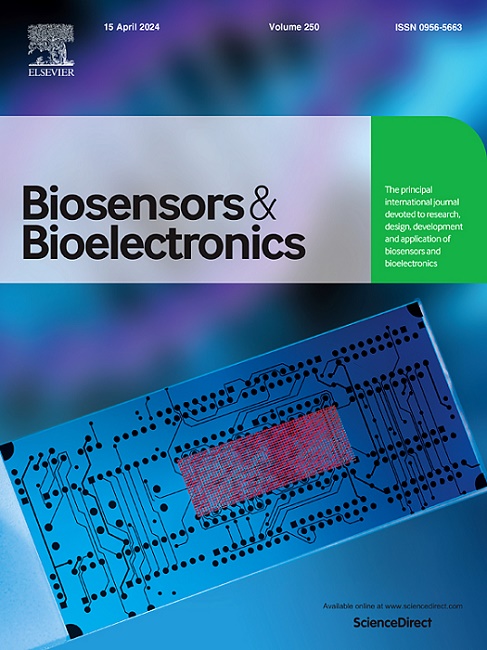结合神经网络决策的超表面增强太赫兹成像在原位异种移植小鼠胶质母细胞瘤模型中的应用
IF 10.7
1区 生物学
Q1 BIOPHYSICS
引用次数: 0
摘要
太赫兹(THz)光学传感和成像由于其低能量、非电离性质和超宽带光谱信息(其中包括许多分子指纹),在一系列生物和医学应用中提供了巨大的潜力。然而,传统的太赫兹成像在生物组织中存在对比度有限和吸收截面低的问题。在各种超表面的推动下,太赫兹传感平台的最新进展通过提高光学检测和成像的灵敏度和选择性来解决这些限制。本研究提出了一种先进的无标签太赫兹成像技术,利用超表面来增强图像对比度。我们将该方法应用于胶质母细胞瘤模型小鼠脑组织成像。为了清楚地识别癌变区域,采用有限元模拟方法确定了脑组织的复折射率。此外,超表面的强共振特性有助于神经网络中基于关联的学习。我们使用卷积神经网络利用超表面增强成像数据来分割癌症边界。通过使用荧光标记图像作为神经网络的训练数据,胶质母细胞瘤区域的识别准确率超过99%。这项研究强调了超表面在从根本上增强太赫兹波与物质相互作用方面的关键作用,以及与神经网络的集成如何实现高灵敏度的癌症检测。这为太赫兹成像技术在医学诊断中的临床应用铺平了道路。本文章由计算机程序翻译,如有差异,请以英文原文为准。
Metasurface-enhanced terahertz imaging for glioblastoma in orthotopic xenograft mouse model combined with neural network decision making
Terahertz (THz) optical sensing and imaging offer significant potential in a range of biological and medical applications owing to their low-energy, non-ionizing nature, and ultra-broadband spectral information, which includes numerous molecular fingerprints. However, conventional THz imaging suffers from limited contrast and low absorption cross-section in biological tissues. Recent advances in terahertz sensing platforms, facilitated by various metasurfaces, have addressed these limitations by enhancing the sensitivity and selectivity of optical detection and imaging. This study presents an advanced label-free terahertz imaging technique that leverages a metasurface to enhance image contrast. We applied this method to image glioblastoma model mouse brain tissues. To identify cancerous regions clearly, the complex refractive indices across the brain tissues were determined using a finite element method simulation. Furthermore, the strong resonance features of the metasurface facilitate correlation-based learning in neural networks. We employed a convolutional neural network to segment cancer boundaries using the metasurface-enhanced imaging data. Glioblastoma regions were identified with an accuracy of over 99 %, by using fluorescence-labeled images as the training data for the neural networks. This study highlights the critical role of metasurfaces in fundamentally enhancing terahertz wave-matter interactions and how integration with neural networks enables highly sensitive cancer detection. This paves the way for the clinical applications of terahertz imaging technologies in medical diagnostics.
求助全文
通过发布文献求助,成功后即可免费获取论文全文。
去求助
来源期刊

Biosensors and Bioelectronics
工程技术-电化学
CiteScore
20.80
自引率
7.10%
发文量
1006
审稿时长
29 days
期刊介绍:
Biosensors & Bioelectronics, along with its open access companion journal Biosensors & Bioelectronics: X, is the leading international publication in the field of biosensors and bioelectronics. It covers research, design, development, and application of biosensors, which are analytical devices incorporating biological materials with physicochemical transducers. These devices, including sensors, DNA chips, electronic noses, and lab-on-a-chip, produce digital signals proportional to specific analytes. Examples include immunosensors and enzyme-based biosensors, applied in various fields such as medicine, environmental monitoring, and food industry. The journal also focuses on molecular and supramolecular structures for enhancing device performance.
 求助内容:
求助内容: 应助结果提醒方式:
应助结果提醒方式:


